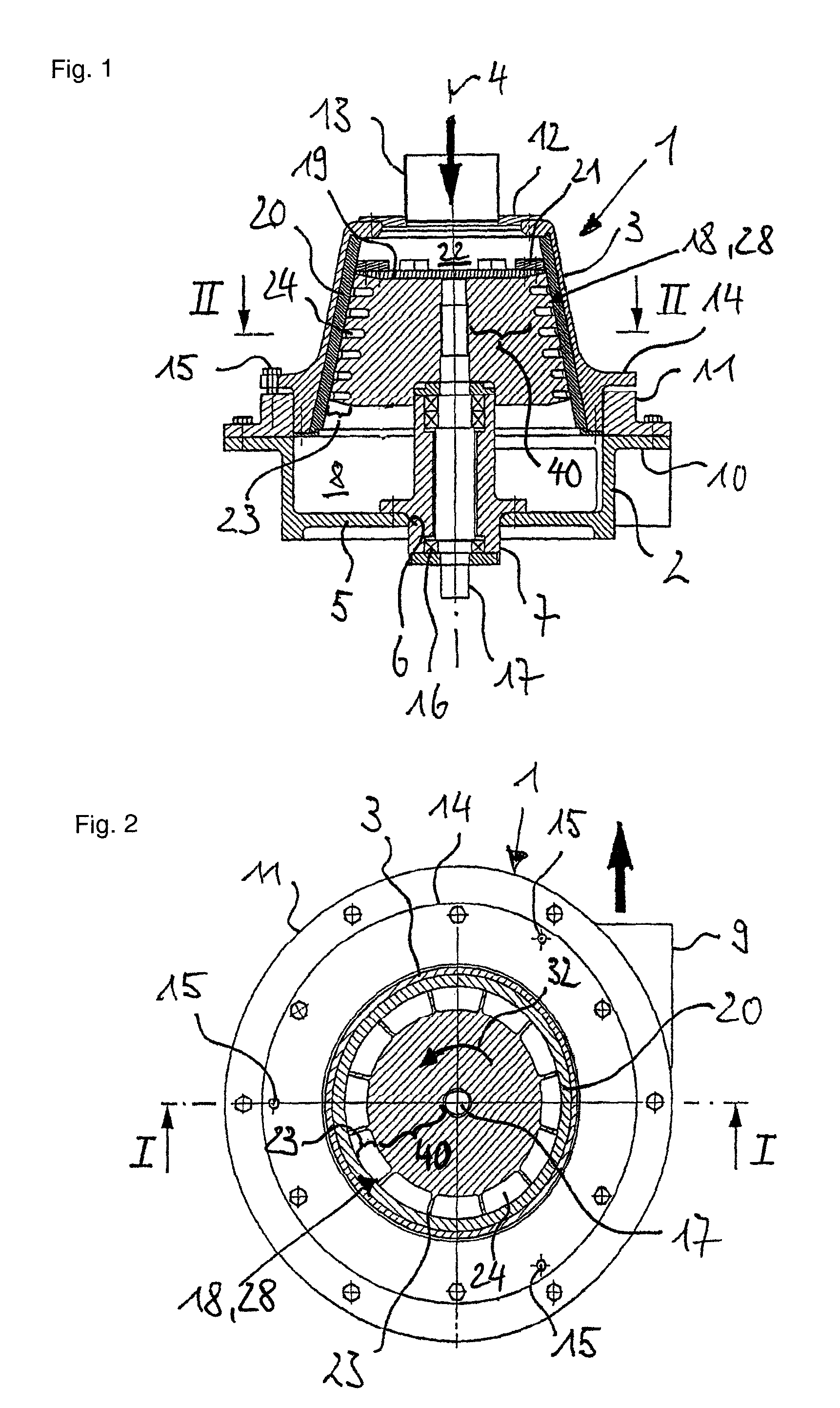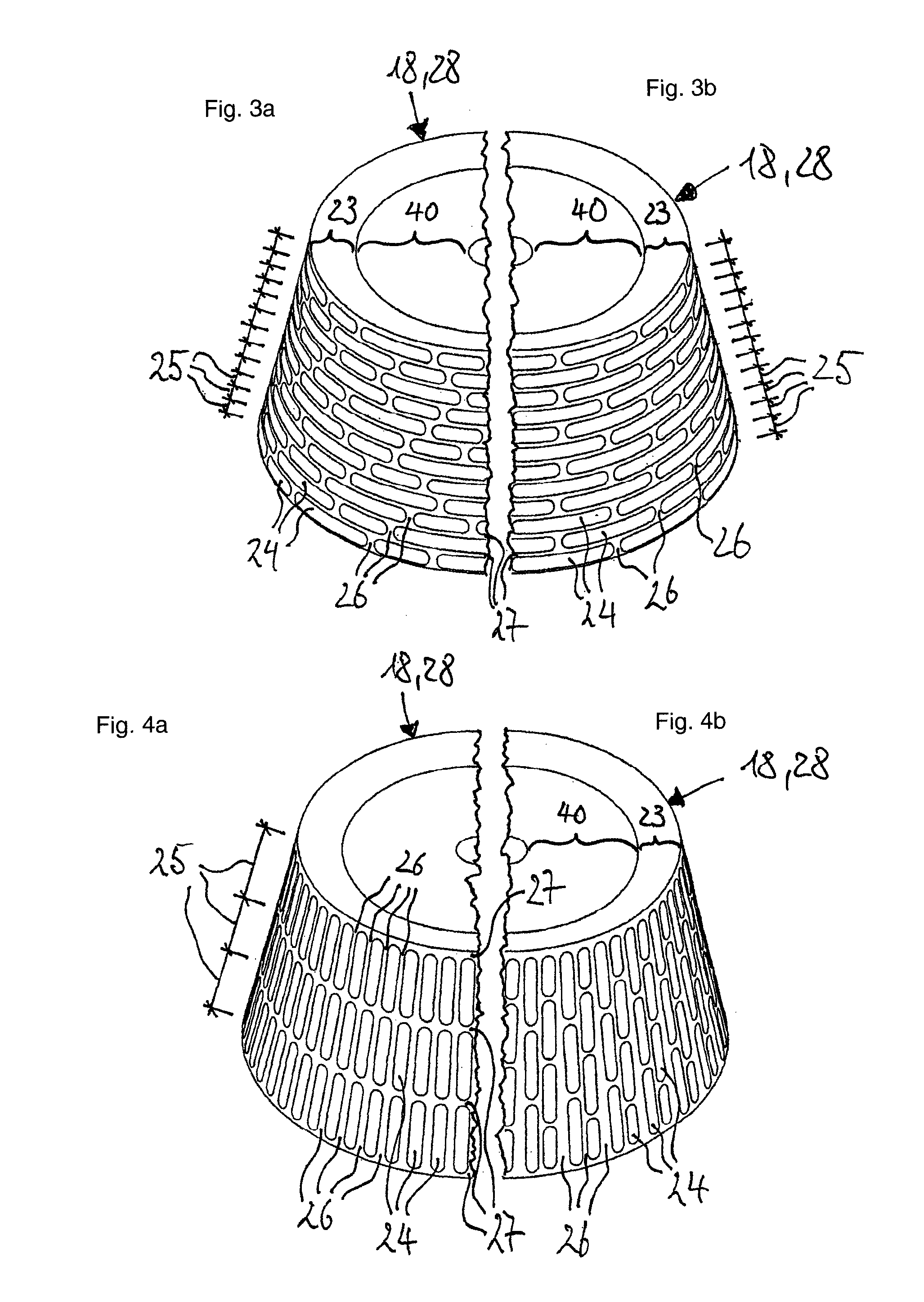Device for processing feedstock
a technology for feedstock and rotor tools, which is applied in the direction of wet separation, gas current separation, food science, etc., can solve the problems of large amount of work, large impact on the quality of processed end products, and substantial mounting costs, and achieve the effect of rapid change of rotor tools
- Summary
- Abstract
- Description
- Claims
- Application Information
AI Technical Summary
Benefits of technology
Problems solved by technology
Method used
Image
Examples
Embodiment Construction
[0028]The general structure of a device of the invention emerges from FIGS. 1 and 2. Evident there is a housing 1, which is made up of a cylindrical bottom part 2 and a bell-shaped top part 3. The longitudinal axis of housing 1 is provided with the reference character 4. The bottom part 2 is closed downward by a bottom 5 in which a circular opening 6 is disposed centric to axis 4. Opening 6 is used for accommodating an essentially cylindrical shaft bearing 7, which is screwed on coaxially to axis 4 by means of a flange connection on bottom 5. The upper end of shaft bearing 7 extends into the area of the top part 3. An annular channel 8, which opens out of housing 1 via a material outlet 9, tangential to axis 4, results in this way within the bottom part 2. The upper closure of the bottom part 2 is formed by a circumferential annular flange 10, to which a bearing ring 11, angular in cross section, is attached.
[0029]As already mentioned, the outer form of the top part 2 is bell-shaped...
PUM
 Login to View More
Login to View More Abstract
Description
Claims
Application Information
 Login to View More
Login to View More - R&D
- Intellectual Property
- Life Sciences
- Materials
- Tech Scout
- Unparalleled Data Quality
- Higher Quality Content
- 60% Fewer Hallucinations
Browse by: Latest US Patents, China's latest patents, Technical Efficacy Thesaurus, Application Domain, Technology Topic, Popular Technical Reports.
© 2025 PatSnap. All rights reserved.Legal|Privacy policy|Modern Slavery Act Transparency Statement|Sitemap|About US| Contact US: help@patsnap.com



